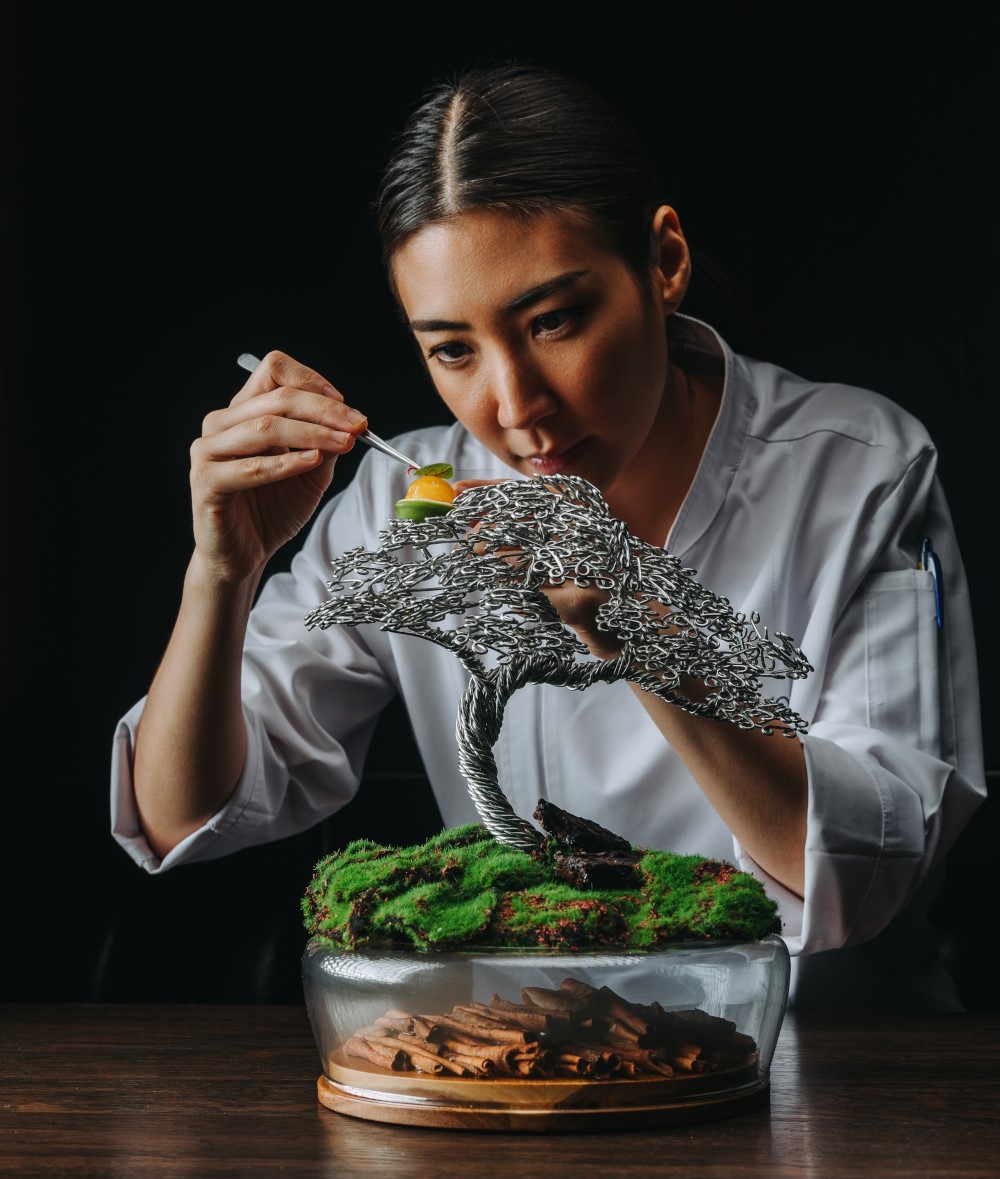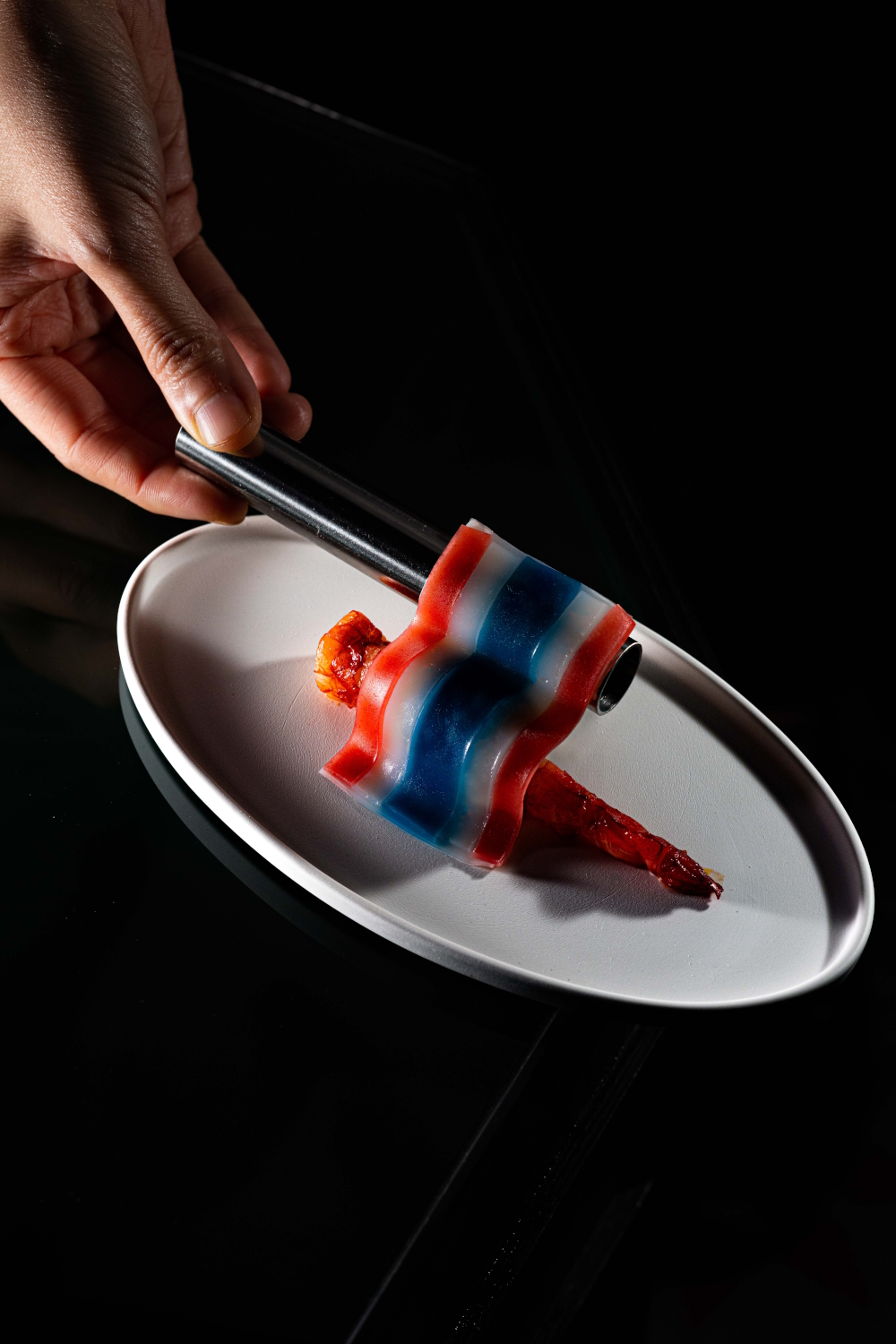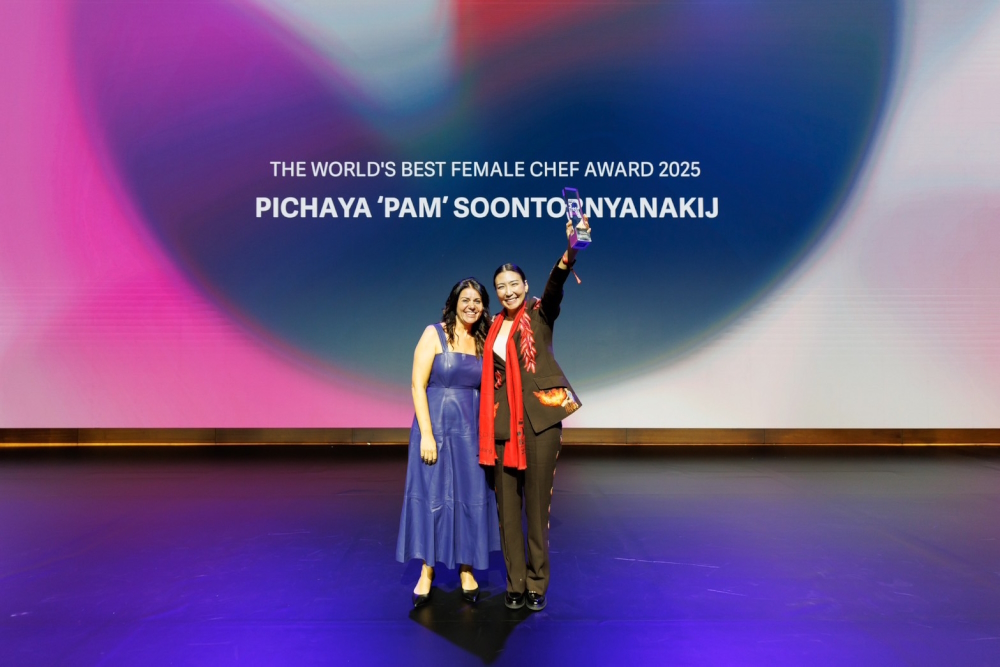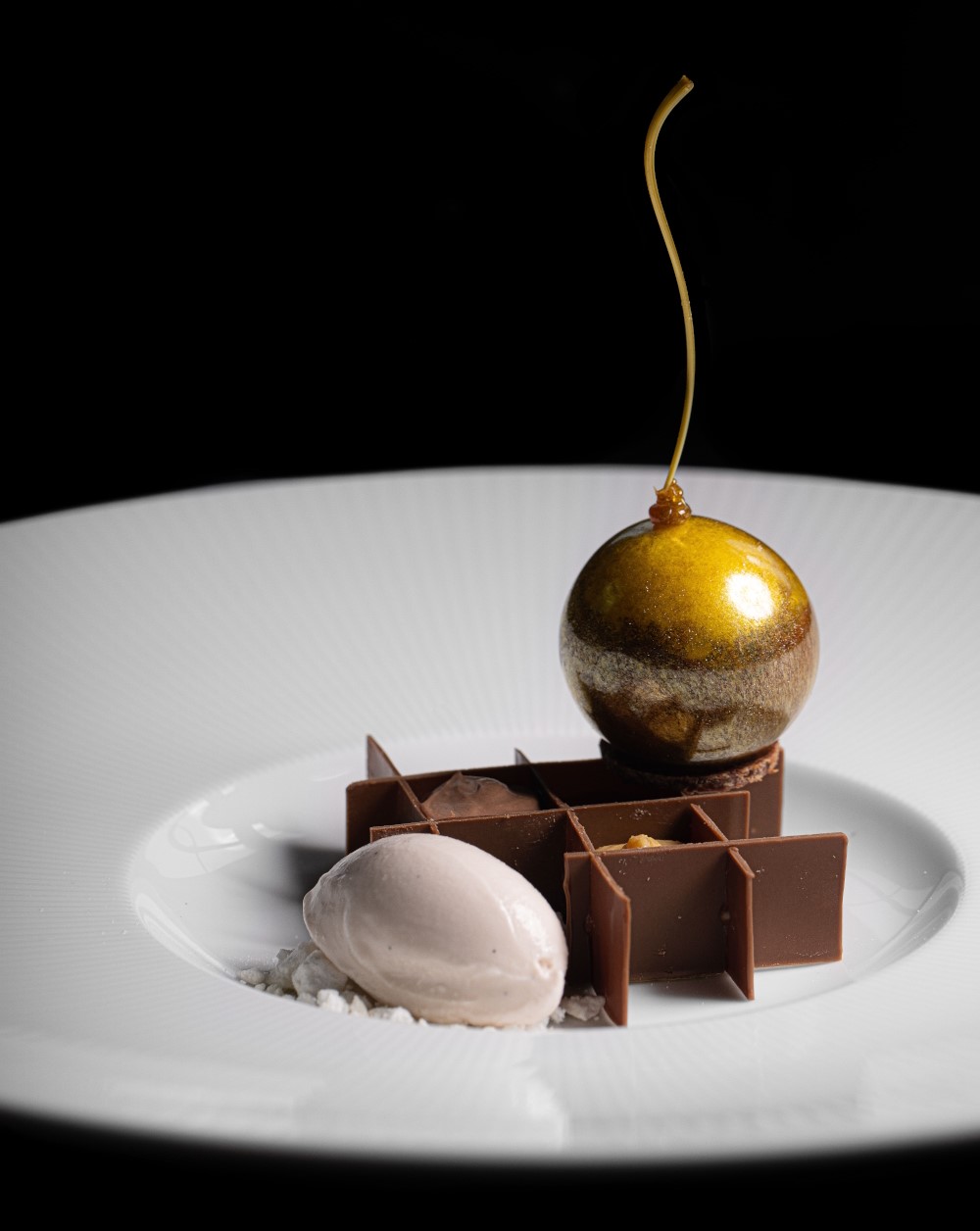Pichaya "Chef Pam" Soontornyanakij
Master Chef
Thailand
The World’s Best Female Chef 2025 and Asia’s Best Female Chef 2024! This lady here is the first ever Asian and Thai Female Chef to receive The World’s Best Female Che‘ status, also earned a Michelin Star (2023) and Opening of the Year awards from the Michelin Guide in the same year. Furthermore she‘s the first and only Thai female chef who achieved status of three knives from the World Best Chef Award. Her restaurant Potong is also voted #1 in Bangkok by TOP 25 Bangkok Restaurants. Now a critically acclaimed chef and global television personality (Top Chef Thailand, Top Chef Arab World, World Cook Competition, Iron Chef, Chefs Uncut on Netflix, The Taste Show, and many more) as well as co-founder of restaurant group The X Project her life might have taken a completely different route after having studied communication arts and being a fifth-generation descendant of a family that operated a traditional Chinese herbal medicine business in Bangkok’s Chinatown.
Pichaya "Chef Pam" Soontornyanakij
Master Chef
Thailand

„I’m a believer in following your heart, even when it's a risk. Go with your gut because it's going to be you who is affected by the decision you make, whether you go ahead with something or not.” This quote on theworlds50best.com reflects the inner attitude of Chef Pam (born Pichaya Utharntharm on July 15, 1989 in Bangkok). She attended Saint John’s International School, and graduated from Chulalongkorn University in 2010 with a bachelor of arts in communication arts, but shortly afterwards started a career path in a different profession that the then 21-year old had to learn from scratch. At first she went to the local branch of Le Cordon Bleu in Bangkok. In the renowned Culinary Arts School that „offers French cuisine and pâtisserie curricula that are the same as those of the other Le Cordon Bleu school networks in Europe“ (website) her yardstick, the American cookbook-author Julia Childs (1912-2004) had visited too. The training there must have been very good, because the twen won the Asia Youth Hope Cooking contest organized by Institut Disciples d’Escoffier – professional culinary school in Thailand’s capital (2011), was also one of The Young Women of the Year 2012 in Her World Magazine and was first runner-up in the Young Talent Escoffier global competition in the same year“ (Wikipedia). Time to move on for deepening the culinary craft skills.
In the United States this Thai-Chinese-Australian woman studied at The Culinary Institute of America (CIA) in New York, where she graduated with honors, earning first place in both culinary and management disciplines. Following her graduation, the young talent trained at the two-Michelin-starred Jean- Georges in The Big Apple under Executive Chef Mark Lapico. After gaining international culinary experience, Chef Pam returned to Bangkok „to cook for a maximum of 14 guests in the evening at a Chef's Table in her parents' living room – without a licence, but with a long waiting list“ (welt.de).
In 2015 her first fine dining restaurant The Table was established. Initially operated from her personal kitchen, the restaurant quickly garnered attention for its intimate dining concept and modern interpretation of Thai cuisine. The Table was named Best New Restaurant by the global magazine Time Out (Wikipedia).
The trying times of the business stillstand during the Covid-19 period was used for a project of Herculean proportions within 2 ½ years: restoring her family’s ancestral Sino-Portuguese architectural, five-storey building of 120 years that used to be a traditional Chinese-medicine pharmacy, into a fine dining venue. In 2021 Potong (English: Reduce), seating 36 people only, was opened. It was the first restaurant of its kind to serve innovative/ progressive Thai-Chinese cuisine in Thailand, with a 20-course Tasting Menu, whereby each dish embodies the 5-Element philosophy of “Salt, Acid, Spice, Texture, and Millard Reaction” for the five senses.
The X Project, mentioned at the beginning, introduces itself on its website with this slogan: „We are the future of hospitality. Unpredictable. Unforgettable. Provocative by experience.“ In tune with it, it comprises the following outlets at this point in time: Potong (plus Opium Bar on the building’s fourth and fifth floor), The Table („New American Cuisine“), Khao San Sek („the very essence of Thai cuisine“), Tora Izakaya („Japan Cuisine“), Smoked & Steakhouse („a revolutionary BBQ smokehouse“) and three SMOKED Joints („BBQ meets creativity“).
On theworlds50best.com Chef Pam revealed some secrets of her life philosophy: „Work hard and don’t give up, then you get something in return.“ Worthwhile mentioning for her was an advice by her parents who supported her from the very start: „My mum always taught me to appreciate every opportunity that comes your way, however small; sometimes, the smaller ones lead to bigger ones. Remember who stands by you and don't forget the ones behind you!“
As all good things come in threes here’s a further recognition – this time from herself: “Just focus on what you’re doing. And don't compare yourself to anyone because once you start comparing, you’ll feel bad. Especially nowadays with social media, you see the success of people around the world but, actually, you don't know whether it's true or not.”
Chef Pam lives with her husband as well as business partner Tor Boonpiti Soontornyanakij and their daughter in Bangkok/Thailand.
Interview October 2025
Secrets of a female world’s best: top talent, hard work, risk-taking, self-belief and mam’s advice
INTUITION/IMAGINATION
?: How does intuition present itself to you – in form of a suspicious impression, a spontaneous visualisation or whatever - maybe in dreams?
Intuition often appears when I’m not trying to create — sometimes when I’m cooking, driving, or even putting my daughter to bed. It’s like a sudden image or taste in my mind. I rarely plan those moments; they just happen. I’ve learned to trust them because they often lead to my most personal ideas.
?: Will any ideas be written down immediately and archived?
Always. My phone’s Notes app and kitchen notebooks are full of sketches, flavor combinations, and half-formed ideas. I don’t force them to make sense right away — some of them wait months before they become something real.
?: How do you come up with good or extraordinary ideas?
I’m very emotional-based person. I feet like sometimes a thing pops in my head, sometimes by connecting things that don’t normally go together — a memory, a scent, a childhood flavor, and sometimes an emotion. I think good ideas come when logic and emotion meet halfway.
?: Do you feel that new creative ideas come as a whole or do you get like a little seed of inspiration that evolves into something else and has to be realized by endless trials and errors in form of constant developments until the final result?
They usually start small — a single ingredient, a texture, or a memory — then evolve. I test, adjust, and often fail before finding the balance that feels right. It’s a mix of instinct and repetition until the dish “feels alive.”
?: What if there is a deadline, but no intuition? Does the first fuel the latter maybe?
Deadlines push intuition to the surface. When I know time is running out, I stop overthinking. The emotion takes over, and that’s usually when creativity becomes pure instinct.
INSPIRATION
?: What inspires you and how do you stimulate this special form of imaginativeness?
People and places. Especially when I travel with my family and team. Each trip and each time, it inspires me. I’m also inspired by cities — around the world from Oman to Bangkok. I love travelling and it always brings back that inspiration. Sometimes, I walk around markets or old streets; that’s where new ideas come from.
?: How do you filter between ideas that are worthwhile pursuing and bad ones that you just let go of?
If an idea doesn’t connect emotionally, I let it go. Usually my gut feeling says “yes” behind it if it’s a good idea, even a quiet one. If it only looks beautiful but says nothing, it doesn’t stay.
?: Does an idea need to appeal to you primarily or is its commercial potential an essential factor?
It has to appeal to me first. If I don’t believe in it, no guest will either. The commercial part can come later — emotion must lead, not follow.
?: Do you revisit old ideas or check what colleagues or competitors are up to at times?
Sometimes I revisit older creations and see them differently. As for colleagues, I admire and learn from many, but I try not to chase trends. I prefer to evolve quietly, in my own rhythm.
CREATIVITY
?: What time or environment best suits your creative work process — for example, a time and place of tranquility or of pressure?
Late at night, when the restaurant is quiet. That’s when I can think clearly — tasting, adjusting, and reflecting. I like being surrounded by calm after a day of chaos.
Which path do you take from theory or idea to creation?
Most ideas start from a small spark — a memory, a flavor, or something I notice while traveling. I write it down and later test it in my kitchen. From there, we refine through trials and tasting until it feels balanced between tradition and innovation. I don’t rush ideas; I let them evolve naturally until they feel truly part of POTONG.
?: What’s better in the realization process — for example, speed and forcing creativity by grasping the magic of the moment or a slow, ripening process for implementation and elaboration?
Both. Some dishes come alive instantly; others take years. My Pad Thai dish, for example, was reworked countless times before it felt like “mine". Creativity needs time to mature but also courage to decide when it’s ready.
?: How important are self-doubt and criticism by others during such a process?
They’re necessary. Doubt keeps me sharp, and criticism reminds me to listen. I don’t see them as negatives — they keep the ego small and the work honest.
?: Is it better to be creative on your own, to trust only your own instincts, or to work in a team?
I start alone and usually many times together with my husband who always shares different perspectives. If it’s about food, I will finalize the idea for some other business related, I do have my husband who is the managing director of our hospitality group to help me with.
?: In case of a creative block or, worse, a real failure, how do you get out of such a hole?
I step back. I cook something comforting, like rice or noodles, to remind myself why I love this job. Failure is part of growth — I’ve learned more from my mistakes than my successes.
?: Should a creative person always stay true to him- or herself, including taking risks and going against the flow, or must the person, for reasons of commercial survival, make concessions to the demands of the market, the wishes of clients and the audience’s expectations?
Staying true is essential. Of course, I listen to feedback and adapt, but never at the cost of identity. Guests come to Potong because they trust our authenticity — not because we please everyone.
?: How are innovation and improvement possible if you’ve established a distinctive style? Is it good to be ahead of your time, even if you hazard not being understood?
By questioning yourself. I always ask, “Can this be done differently?” Innovation doesn’t mean changing who you are — it means deepening your understanding of what already exists.
?: When does the time come to end the creative process, to be content and set the final result free? Or is it always a work-in-progress, with an endless possibility of improvement?
Never. Every menu, every dish evolves. Even after serving it hundreds of times, I’ll still find something to tweak. Creativity isn’t about perfection; it’s about curiosity.
?: How does artificial intelligence change human creativity? And do you? Would will you use it at all?
AI can be a great tool — to organize, visualize, or even inspire. But creativity comes from emotion, and that’s something no algorithm can replicate. I’d use AI to support ideas, not to define them.
SUCCESS
“Success is the ability to go from one failure to another with no loss of enthusiasm.” Do you agree with Winston Churchill‘s quote?
Completely. My path was built on trial and error. What matters most is passion — if that fire stays, failure becomes just another ingredient in the recipe.
?: Should or can you resist the temptation to recycle a ‘formula’ you're successful with?
Yes. Once something works, it’s tempting to keep repeating it — but repetition is the enemy of growth. Every success should open a new question, not close a chapter.
?: Is it desirable to create an ultimate or timeless work? Doesn’t “top of the ladder” bring up the question, “What’s next?” — that is, isn’t such a personal peak “the end”?
I don’t think anything is “final.” Even the most iconic dishes evolve over time. I’d rather create something meaningful now than chase immortality. Each plate has its own time.
MY FAVOURITE WORK:
Our Pad Thai course is one of the easiest ways to understand what “Progressive ThaiChinese Cuisine” means at POTONG. It’s a dish everyone knows, but very few realize how much story it carries. There are many theories about the origin of Pad Thai, but one of the most well-known is that it was created during Field Marshal Plaek Phibunsongkhram’s era as a symbol of national unity — when rice was being rationed, and the government wanted to promote noodles instead. I found that story fascinating; it became a playful yet meaningful historical note that inspired me to reimagine Pad Thai in a completely new way. I’ve always believed that to invent something new, you must first understand and respect its roots.
In our version, we serve it together with an actual military box from World War II, showcasing the five key ingredients that define the essence of the dish — each one symbolizing Thai flavor, memory, and resilience. The dish itself features shrimp from Nakhon Si Thammarat, a rich shrimp-head jus, and an edible Thai flag made from natural ingredients.
It’s a dish that connects history, emotion, and craftsmanship. It recently won the Best Dish Award from the Black Pearl Restaurant Guide 2025, which made me proud — not just because of the recognition, but because it shows how even something as familiar as Pad Thai can still evolve, inspire, and tell new stories through taste.









